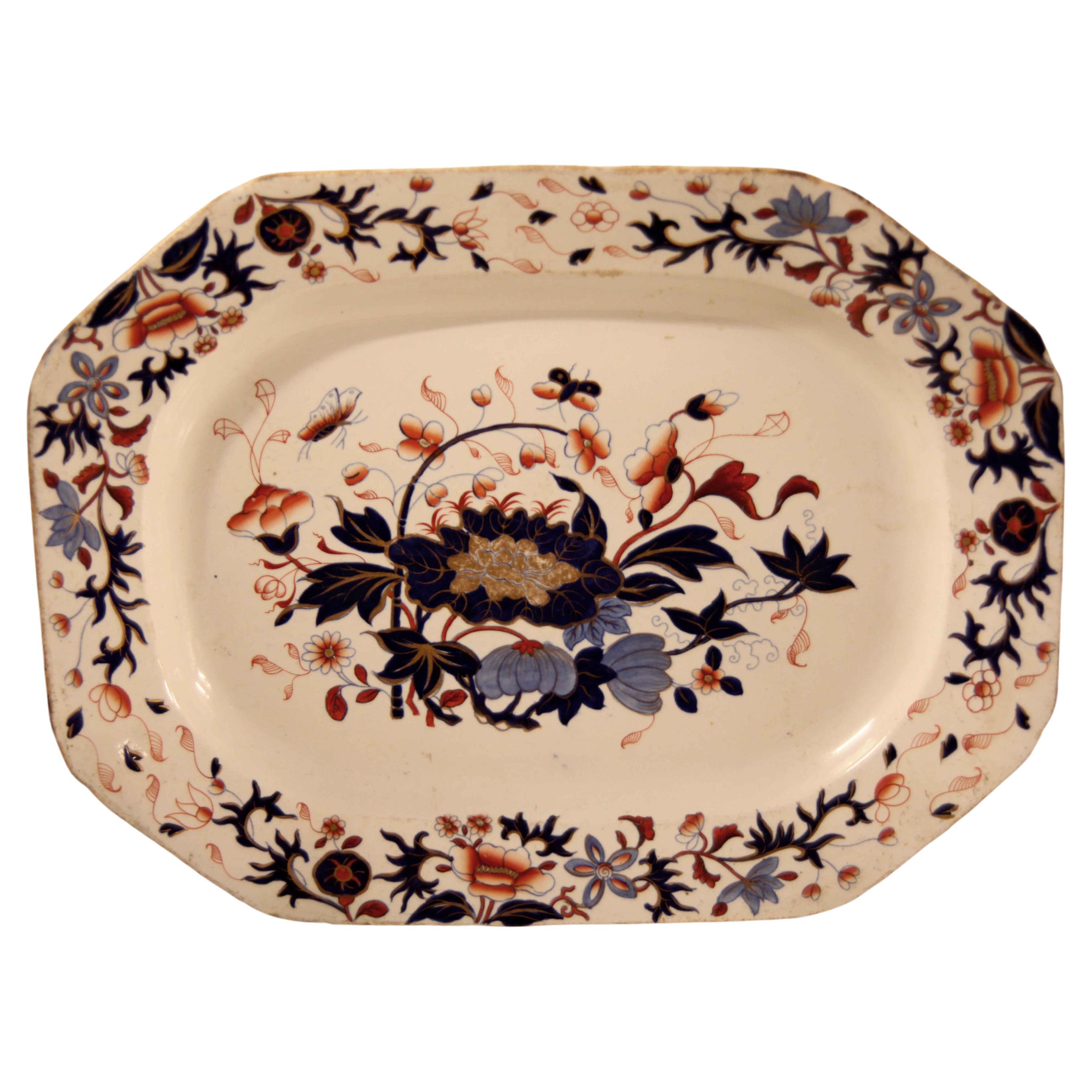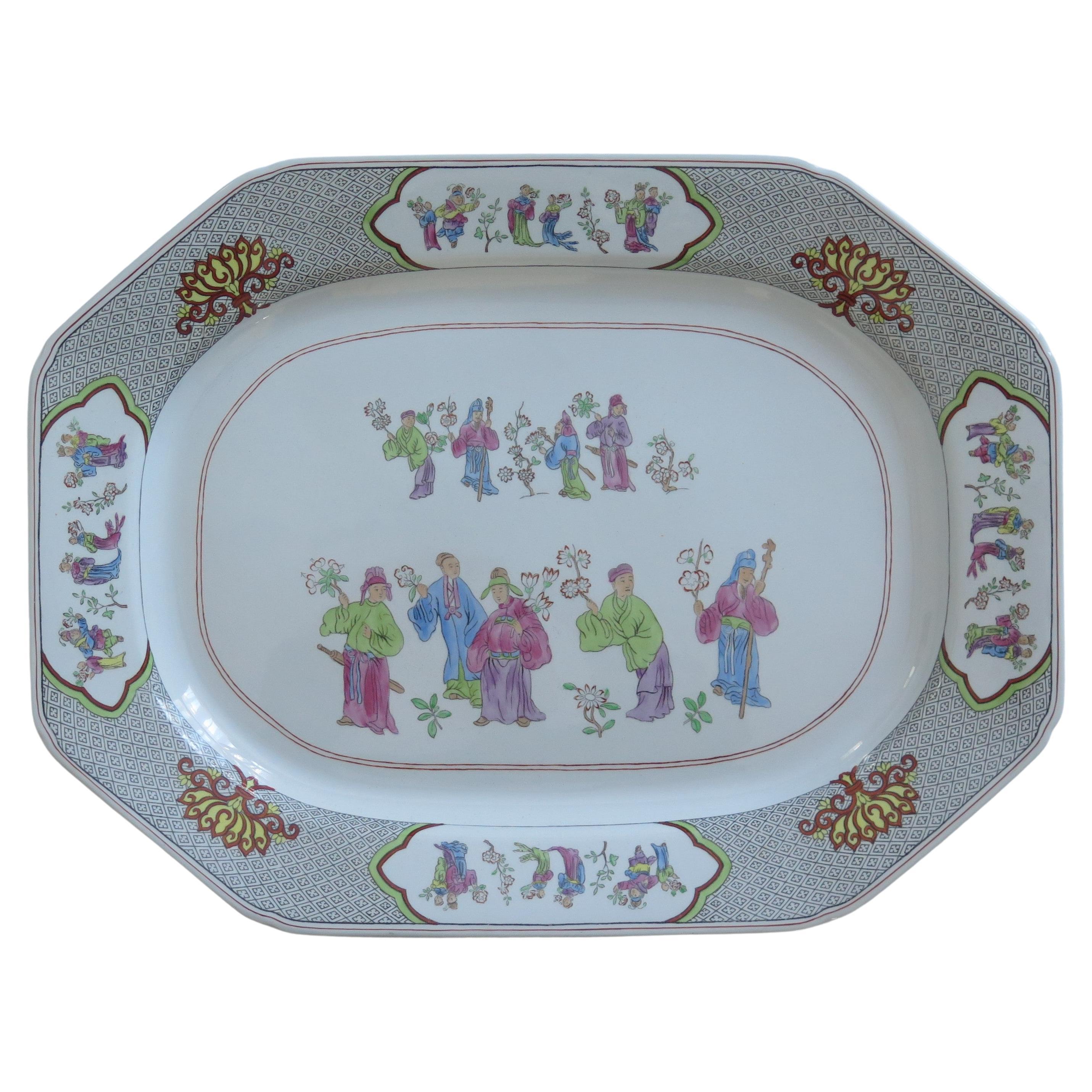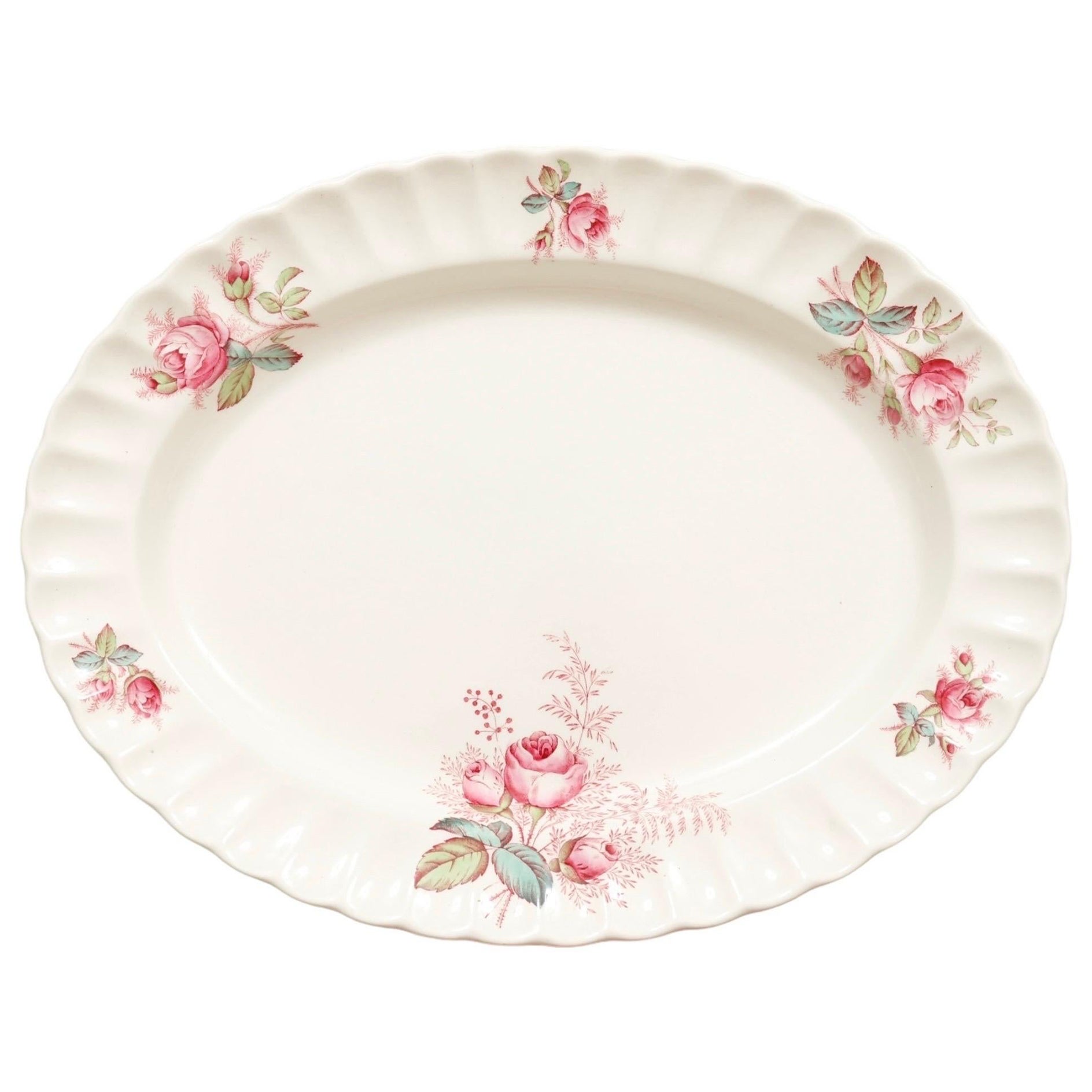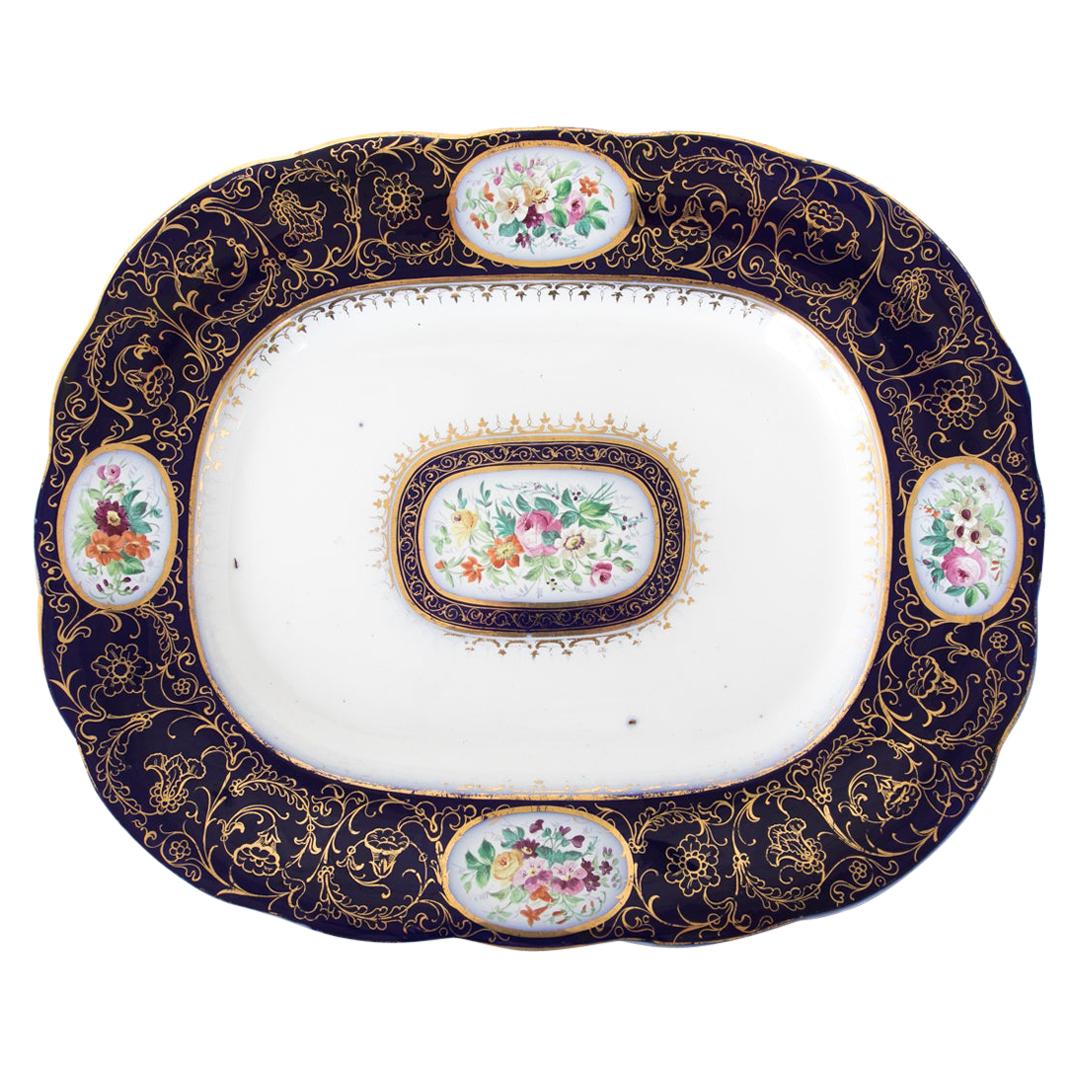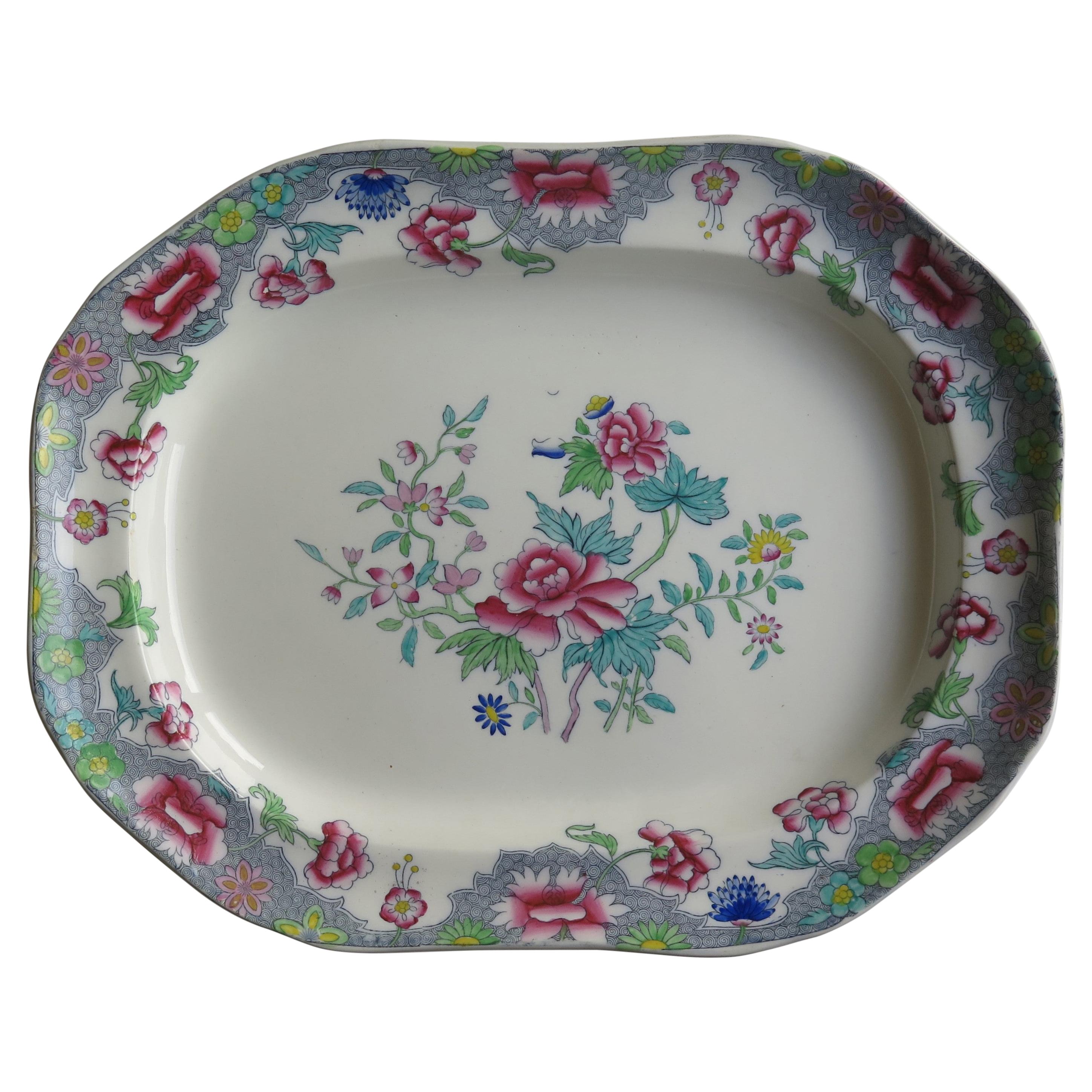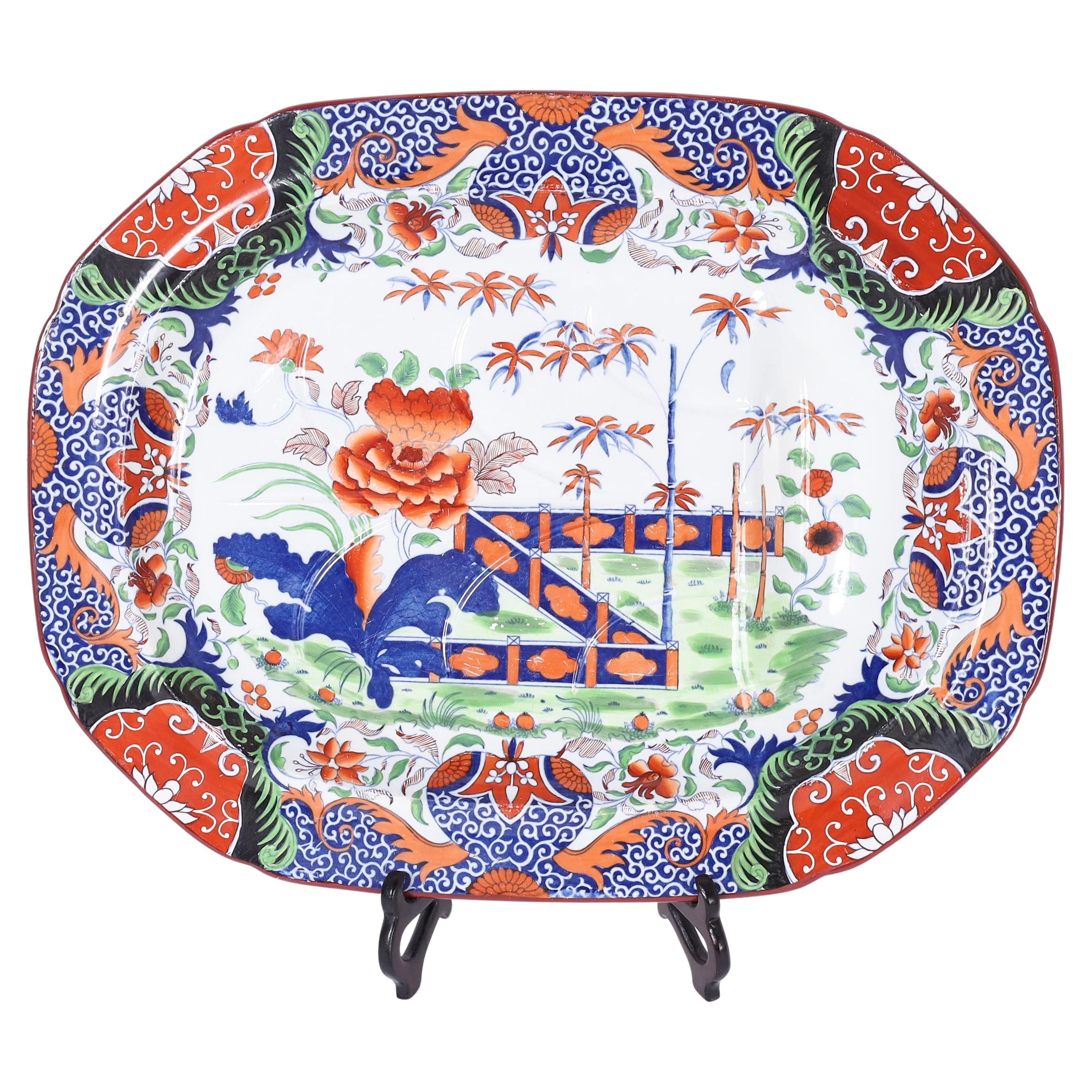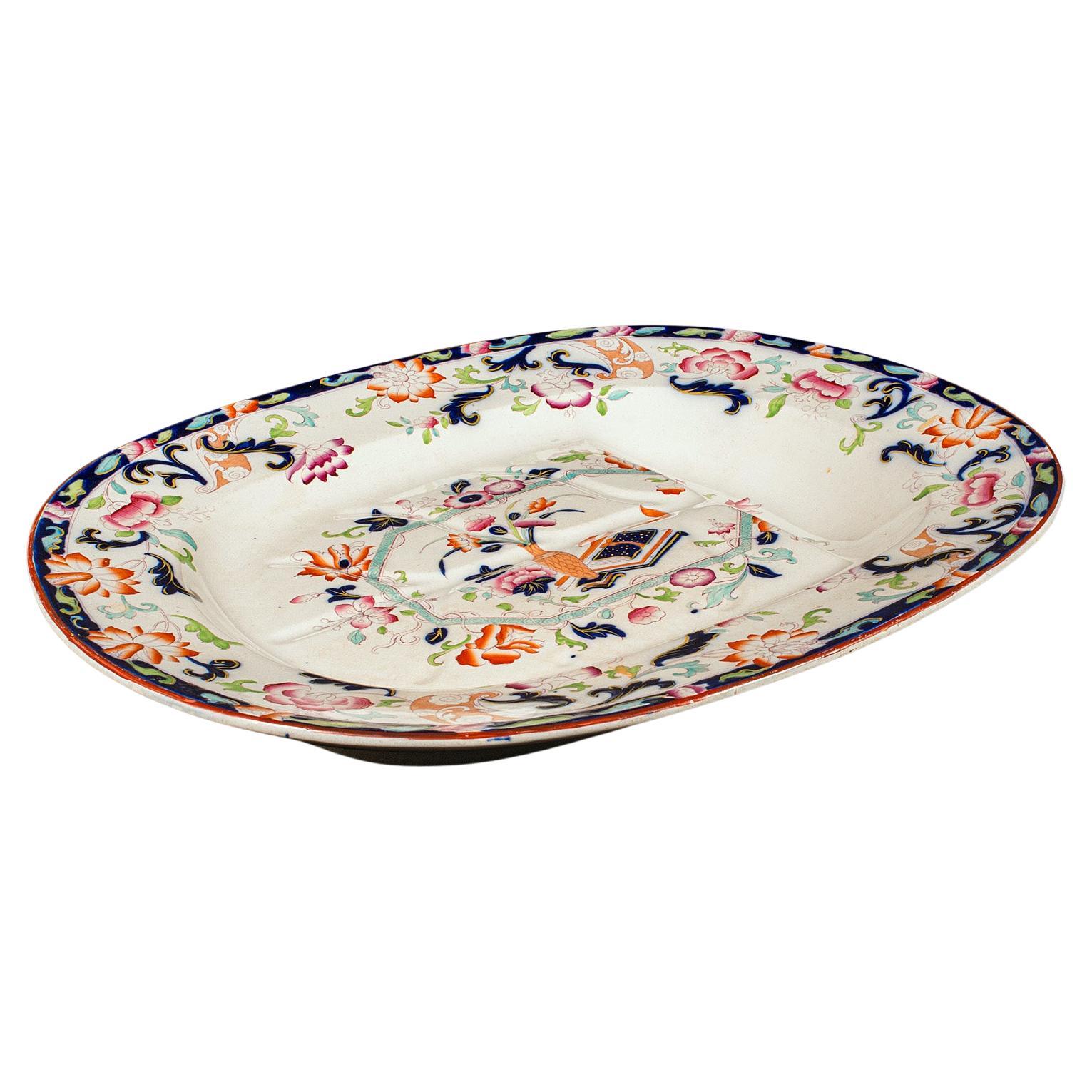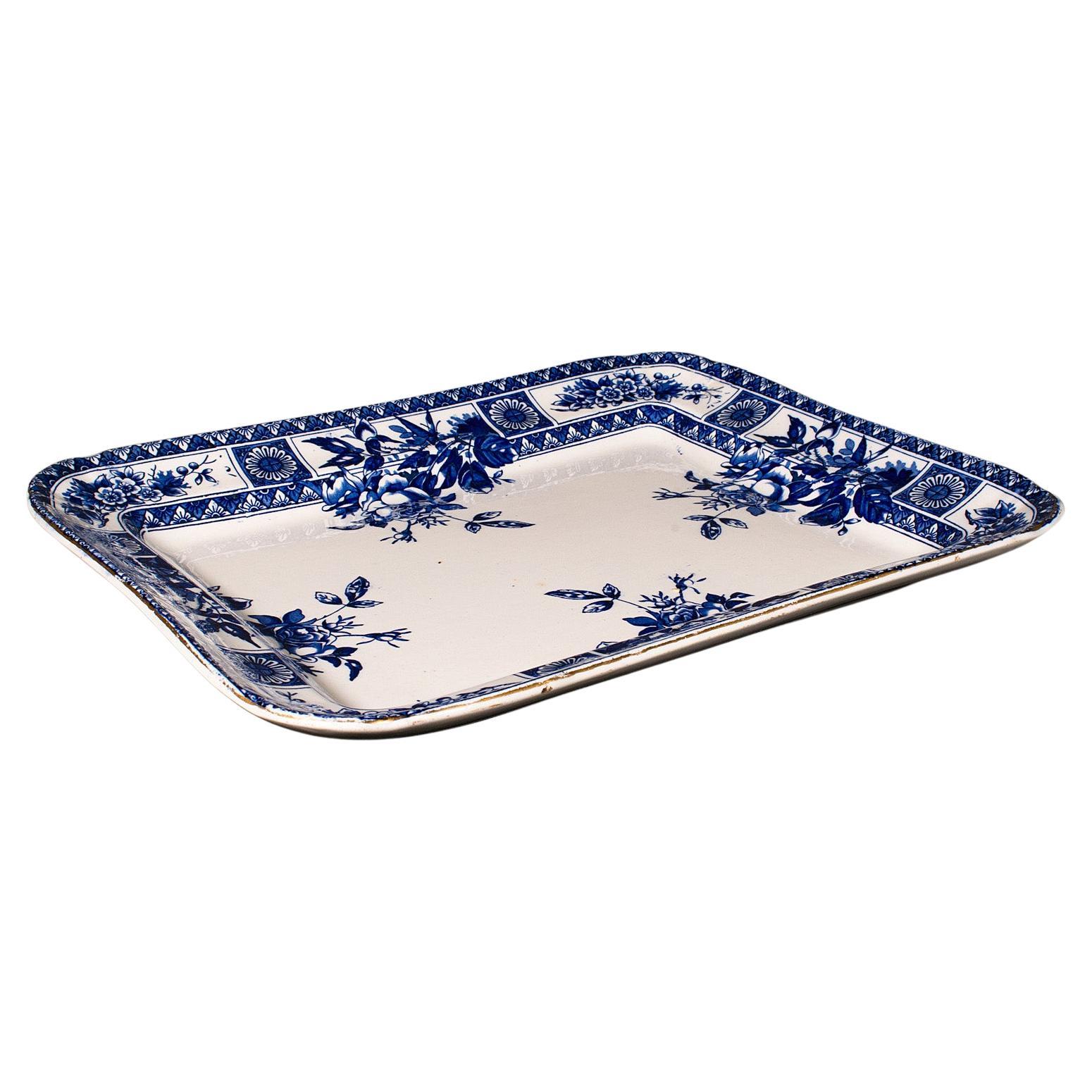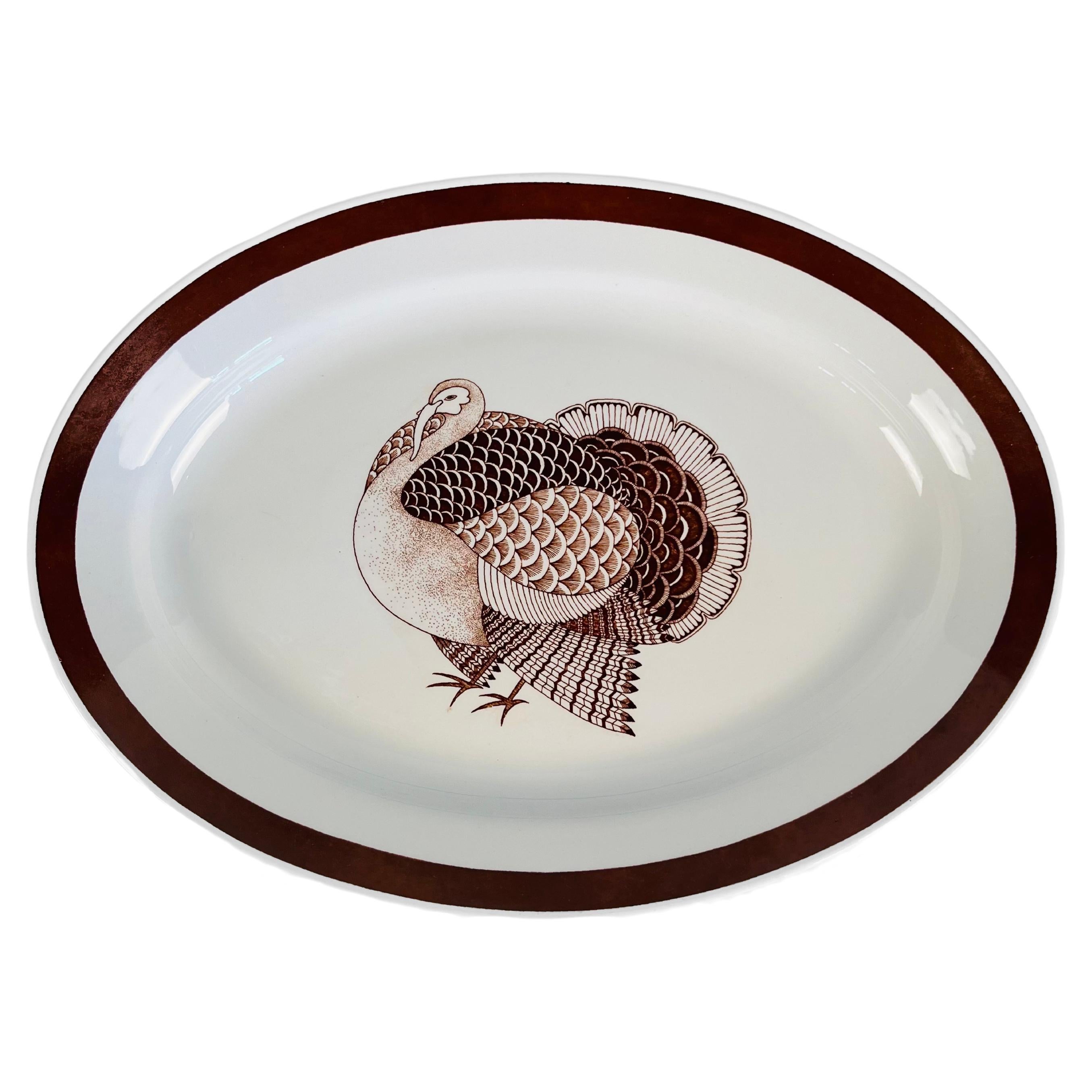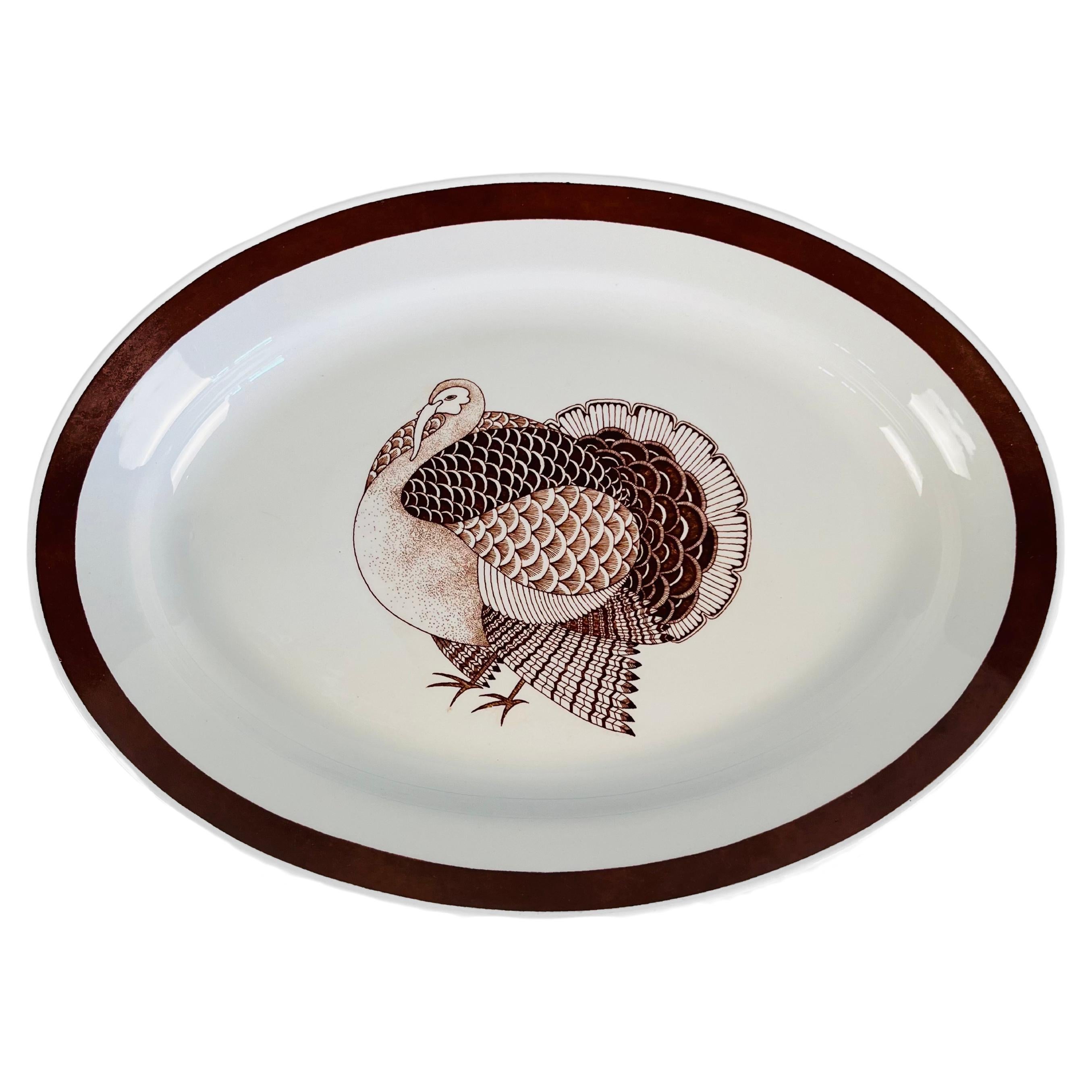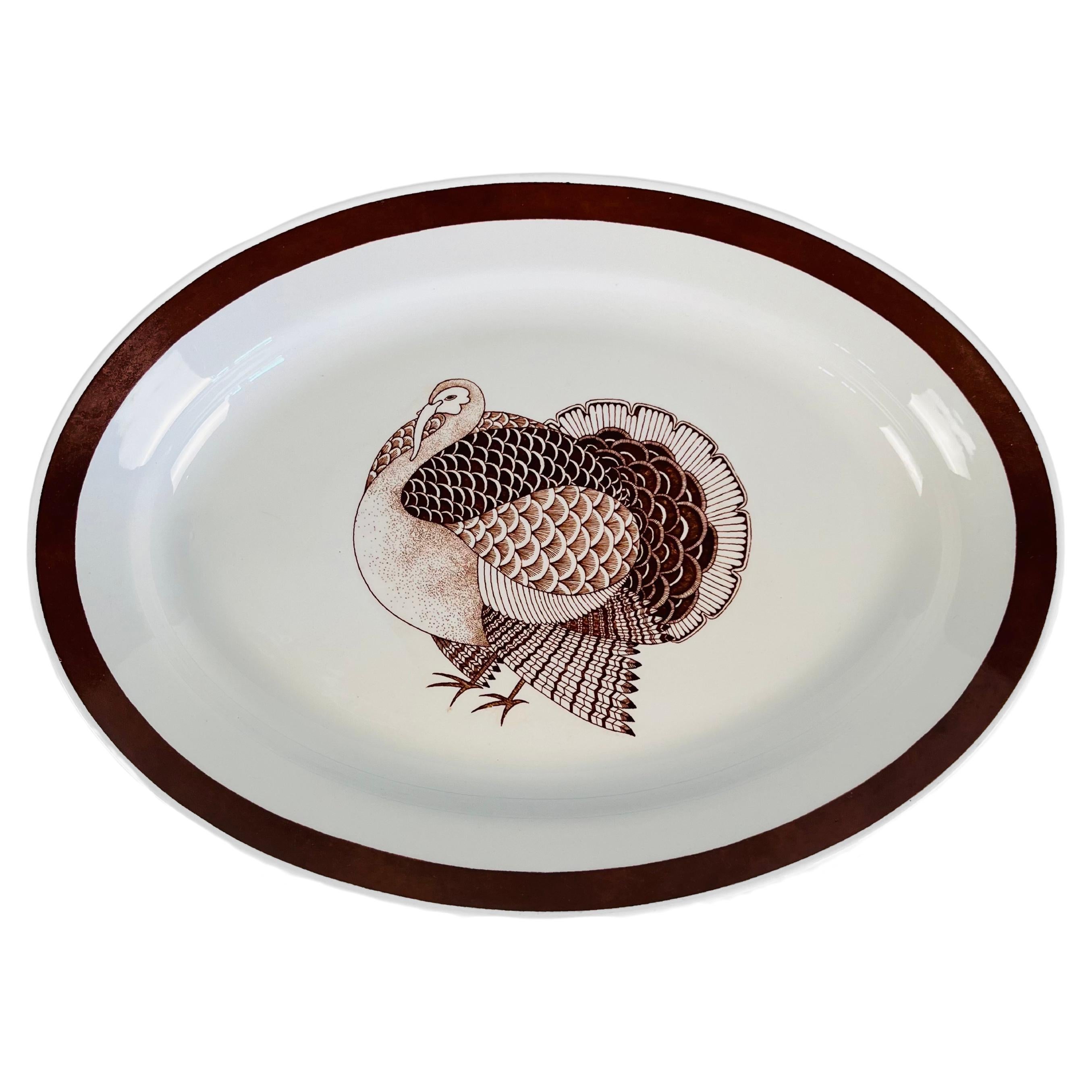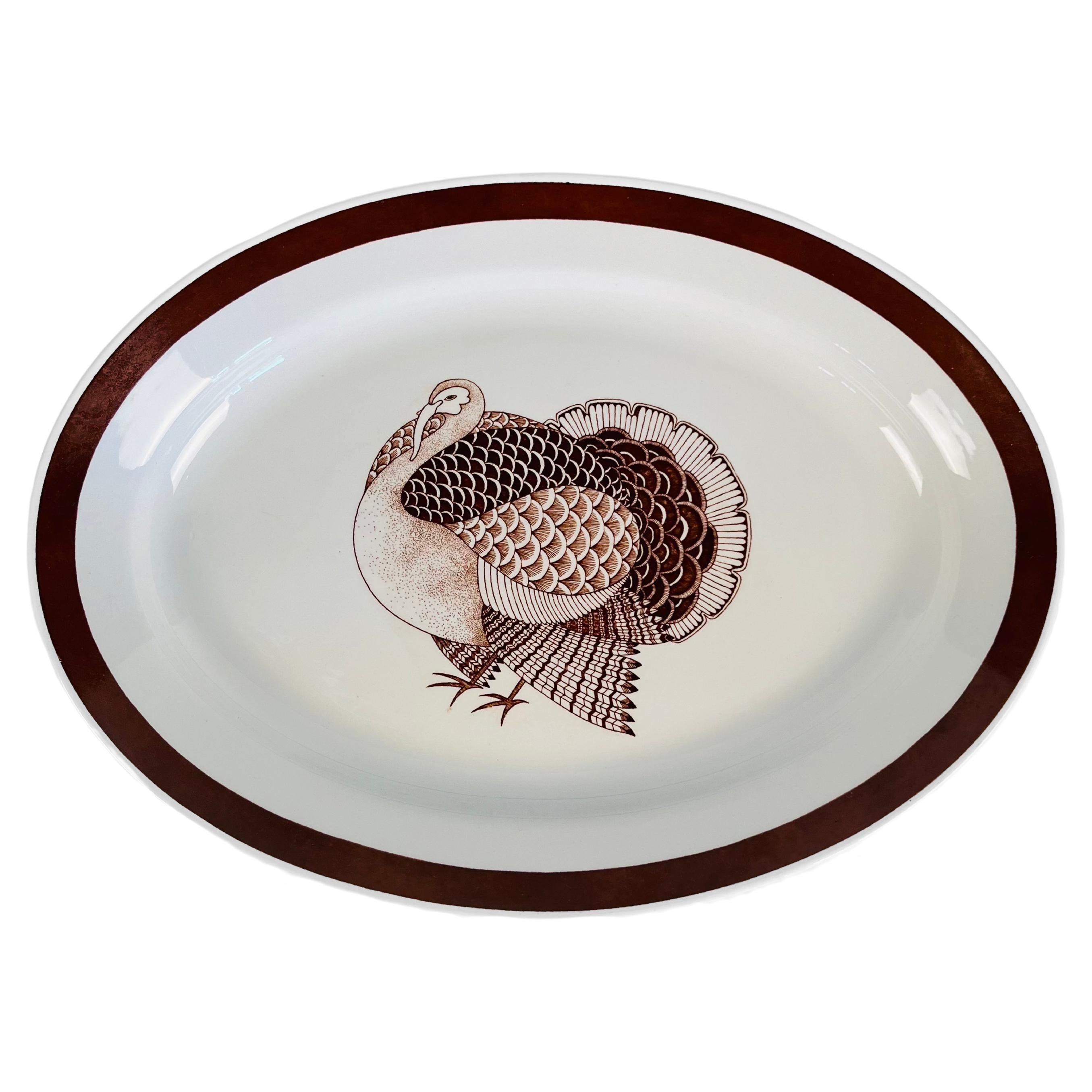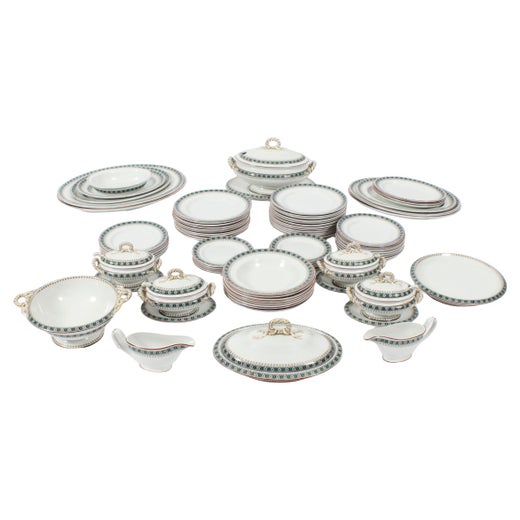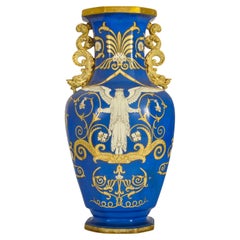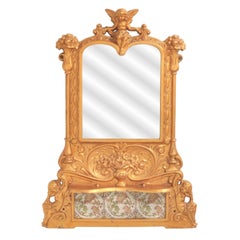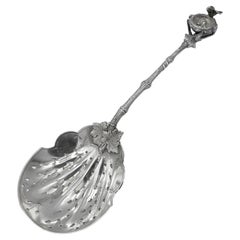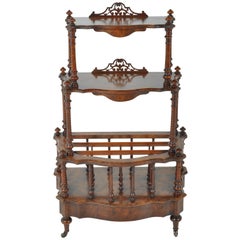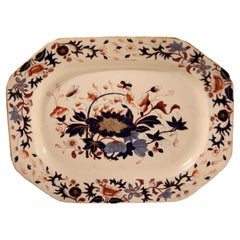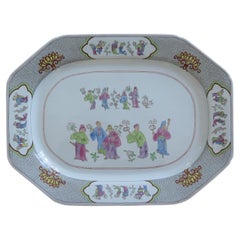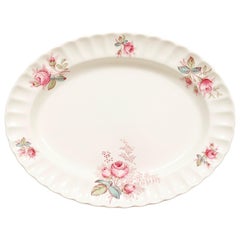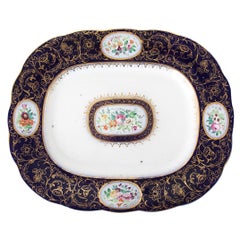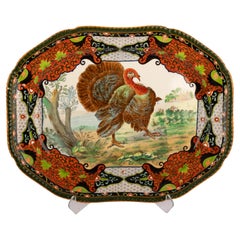
Antique English Copeland Spode Ironstone Thanksgiving Turkey Serving Platter
View Similar Items
Antique English Copeland Spode Ironstone Thanksgiving Turkey Serving Platter
About the Item
- Creator:Copeland Spode (Manufacturer)
- Dimensions:Height: 1.75 in (4.45 cm)Width: 21 in (53.34 cm)Depth: 16.25 in (41.28 cm)
- Style:Late Victorian (Of the Period)
- Materials and Techniques:
- Place of Origin:
- Period:
- Date of Manufacture:1894
- Condition:Wear consistent with age and use.
- Seller Location:Portland, OR
- Reference Number:Seller: BB-82521stDibs: LU4876131313932
Copeland Spode
Steeped in British history and tradition, the name Copeland Spode is renowned among porcelain collectors for its fine-quality bone china and earthenware pieces. With its roots in Spode — one of the oldest and most distinguished of the great pottery companies of Staffordshire, the time-honored home of English ceramics — Copeland Spode is known to pottery enthusiasts for some of the most timeless and recognizable patterns produced in 19th and early 20th-century porcelain manufacturing such as Wicker Lane, Chinese Rose and Tower. Collectors regard Copeland-marked pieces as Spode china.
The story of Copeland Spode china began in 1770 when English potter Josiah Spode founded a pottery and homewares company called Spode in Stoke-on-Trent, England. Within fifteen years, the manufacturer became known for its signature blue-on-white palette, and one of the company’s designers developed a specific cobalt hue for their teapots, trays, bowls and more. Spode’s founder was particularly revered for two technical achievements in the firm’s early decades. The first was to develop a standard formula for the making of bone china — a type of porcelain (made with a mixture of bone ash, minerals and clay) that is dazzlingly white and so strong it can be used to create very thin translucent plates and vessels. The other was to perfect the making of transferware.
In 1833, entrepreneurs William Taylor Copeland (the Lord Mayor of London at the time) and Thomas Garrett purchased Spode’s pottery-making company following the death of Josiah Spode III, and the name was changed to Copeland Spode. Then, in 1847, Copeland became the firm’s sole owner and the name changed again, this time to W. T. Copeland and Sons, in 1867 when Copeland retired and his four sons took over the business.
Trading as W. T. Copeland and Sons throughout the mid-to-late 19th century, the company found a formidable competitor in another well-known porcelain maker, Minton. Many of the manufacturer’s Georgian, Rococo and late-Victorian pieces such as its dinner plates, tableware, platters, bowls and baskets were commissioned by wealthy British and European clients and exported for sale throughout the British Empire and to the United States. Several of W. T. Copeland and Sons’ spectacular pieces were exhibited at the Great Exhibition of London in 1851 and the International Exhibitions of London and Paris in 1862 and 1878, respectively.
In addition to their exceptional quality and design, the company’s ceramics were particularly prized for their intricate patterns which featured a variety of colors. For instance, its popular Tower pattern was available in a pale ultramarine blue, a darker Royal Saxon blue, rose pink, brown and green.
The company continued as W. T. Copeland and Sons until 1970 when Spode again became the brand's name. Afterward, during the late 1970s, Spode, Royal Worcester and Palissy came under common ownership. In 2009, the firm was purchased by the Portmeirion Group. However, the Spode and Royal Worcester names continue to flourish as highly popular “traditional English heritage” brands within the Portmeirion company.
Find antique Copeland Spode serveware, decorative objects and more collectibles on 1stDibs.
More From This Seller
View AllAntique Mid-19th Century English Aesthetic Movement Vases
Ironstone
Antique 19th Century English Late Victorian Wall Mirrors
Iron
Antique 1860s American High Victorian Sterling Silver
Sterling Silver
Antique 1880s English High Victorian Music Stands
Burl, Walnut
Antique 1870s Italian Renaissance Revival Dining Room Tables
Walnut
Antique 1820s English Country Serving Tables
Elm
You May Also Like
Antique 1840s English Platters and Serveware
Ironstone
Antique Late 19th Century English Chinoiserie Ceramics
Pottery
Mid-20th Century English Platters and Serveware
Ceramic
Antique 1830s English Platters and Serveware
Ironstone
Antique Mid-19th Century English Victorian Ceramics
Pottery
Antique Mid-19th Century English Victorian Platters and Serveware
Ironstone
